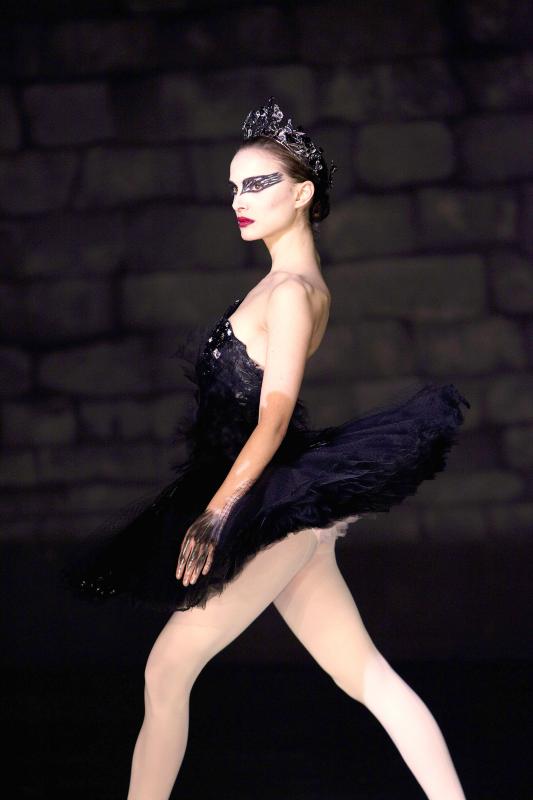Until the last few, system-destroying weeks, 2020 has been all about comfort. Comfort food, comfy clothes, creature comforts and comforting films and TV shows. Like many, my lockdown comfort viewing has meant revisiting old favorites, a list that includes a presumably higher than average representation of dance movies.
I freaking love dance movies. Even the bad ones. They trigger the little girl in me who dreamed of dancing backup for Janet Jackson, Paula Abdul and Madonna. They’re the guilty pleasures I do not at all feel guilty about. They are to me what action films are to accountants, Marvel movies to meteorologists. They give me life. And jazz hands.
English-speaking dance movies range in style from critically acclaimed balletic masterpieces The Red Shoes, The Turning Point and Black Swan, to quasi-musical dramedies Strictly Ballroom, Billy Elliot and A Chorus Line, to plot-light dance battle porn, Stomp the Yard, Street Dance 3D and the Step Up franchise.

Photo: AP
As a 1980s kid, my heart will always belong to the holy trinity of cult favorites Dirty Dancing, Flashdance and Footloose.
I’m talking Honey, Save the Last Dance, Center Stage, You Got Served, Magic Mike, Stomp the Yard. I’m talking Jessica Alba, Channing Tatum, Julia Stiles, Mekhi Phifer, Ginuwine and Ne-Yo. (I’m also talking the original Step Up and the technically dance-adjacent Bring it On, but they’re only available to rent or buy on YouTube and Google Play.)
Rewatching these titans of the genre, it struck me that something equal parts terrible and amazing happened to dance movies at the turn of the millennium. They got cheesier. Much, much cheesier. Gone was any pretense of nuance and artistry, replaced wholly by formulas and risk aversion. It’s like at the end of the 1990s, somebody decided the key to box-office success lay in schmaltzy, saturated pageantry. And it worked.
Since long before Y2K, four tropes have formed the plots of most dance films: uptight girl and boy from the wrong side of the tracks dance (and pash) through their differences; small-town wannabe takes a midnight train to the big smoke; person is forbidden from dancing but secretly keeps dancing; down-on-their-luck hip hop crew enter competition possibly judged by Lil’ Kim.
All tropes come complete with a moral or life lesson about prejudice or tenacity or not putting babies in corners. But while their pre-21st century counterparts could be solemn in their sermonizing, more recent dance movies make it fun. They may be as corny as an Olsen Twin double-bill but they’re twerking while preaching so it’s OK.
Center Stage, for example, is crammed so full of the tropes, characters, morals and melodrama synonymous with the genre, it’s canon. Three young ingenues training for the American Ballet grapple with the pressures of leotards, life and love. Each must confront her demons as she dances: unshakeable apathy, a terrible attitude, or a body that refuses to conform to the insane weight standards of professional ballet. There’s a bad boy, a good boy and the overriding message that you should follow your passions and trust your heart. Plus, Sandy “father of Seth” Cohen (Peter Gallagher) is in it so that’s an instant four-star rating.
And from Swan Lake to Snoop Dog, You Got Served delivers street dance glory with extra cheese and a script so bad it’s beautiful. BFFs Elgin and David get into a spot of bother with their friendly neighborhood crime boss and set their sights on winning the biggest battle their town has ever seen. A rival dance crew, forbidden love and bros-before-ladies betrayal put their bond and their futures to the test, but dancing saves Christmas and everyone learns that friendship is the real winner in the end.
Another great thing about dance movies from 2000 onwards is that they finally brought greater diversity to the genre, at least in terms of race and sexuality. It’s somewhat ironic, considering the importance of dance to so many communities outside the straight, white mainstream.
There’s still a long road to full inclusivity, in going beyond stereotypes, casting people with disabilities and across the gender spectrum, but it’s much rarer to only see straight, white people sashaying across the screen.
Dance movies made between 2000 and 2010 and beyond sit comfortably in a proven Venn diagram where cringe meets climax. They’re the perfect example of why we love so-bad-it’s-good cinema and a peppy distraction from all this year has wreaked.

Under pressure, President William Lai (賴清德) has enacted his first cabinet reshuffle. Whether it will be enough to staunch the bleeding remains to be seen. Cabinet members in the Executive Yuan almost always end up as sacrificial lambs, especially those appointed early in a president’s term. When presidents are under pressure, the cabinet is reshuffled. This is not unique to any party or president; this is the custom. This is the case in many democracies, especially parliamentary ones. In Taiwan, constitutionally the president presides over the heads of the five branches of government, each of which is confusingly translated as “president”

Sept. 1 to Sept. 7 In 1899, Kozaburo Hirai became the first documented Japanese to wed a Taiwanese under colonial rule. The soldier was partly motivated by the government’s policy of assimilating the Taiwanese population through intermarriage. While his friends and family disapproved and even mocked him, the marriage endured. By 1930, when his story appeared in Tales of Virtuous Deeds in Taiwan, Hirai had settled in his wife’s rural Changhua hometown, farming the land and integrating into local society. Similarly, Aiko Fujii, who married into the prominent Wufeng Lin Family (霧峰林家) in 1927, quickly learned Hoklo (commonly known as Taiwanese) and

The low voter turnout for the referendum on Aug. 23 shows that many Taiwanese are apathetic about nuclear energy, but there are long-term energy stakes involved that the public needs to grasp Taiwan faces an energy trilemma: soaring AI-driven demand, pressure to cut carbon and reliance on fragile fuel imports. But the nuclear referendum on Aug. 23 showed how little this registered with voters, many of whom neither see the long game nor grasp the stakes. Volunteer referendum worker Vivian Chen (陳薇安) put it bluntly: “I’ve seen many people asking what they’re voting for when they arrive to vote. They cast their vote without even doing any research.” Imagine Taiwanese voters invited to a poker table. The bet looked simple — yes or no — yet most never showed. More than two-thirds of those

In the run-up to the referendum on re-opening Pingtung County’s Ma-anshan Nuclear Power Plant last month, the media inundated us with explainers. A favorite factoid of the international media, endlessly recycled, was that Taiwan has no energy reserves for a blockade, thus necessitating re-opening the nuclear plants. As presented by the Chinese-language CommonWealth Magazine, it runs: “According to the US Department of Commerce International Trade Administration, 97.73 percent of Taiwan’s energy is imported, and estimates are that Taiwan has only 11 days of reserves available in the event of a blockade.” This factoid is not an outright lie — that